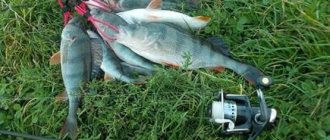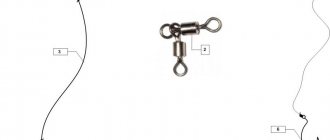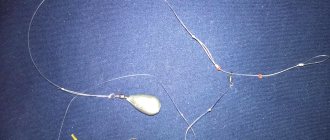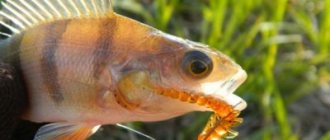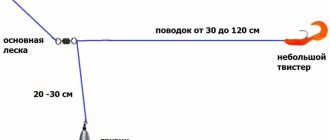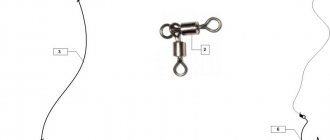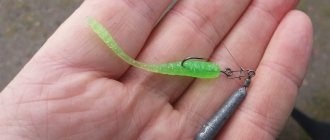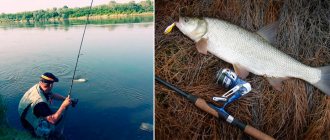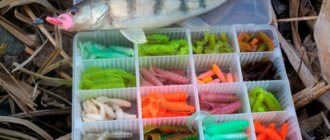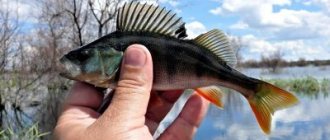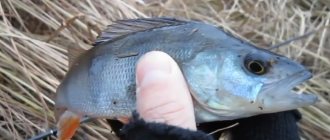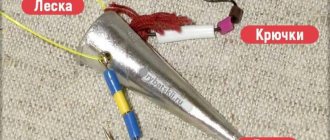Fishing hooks and their classification
It is impossible to imagine a spinning rod or a simple fishing rod without a hook, because this fishing tackle is indispensable in any fishing.
It is worth noting that 50% of all fishing success depends on what kind of fishing hook you have. It so happened that in fishing it is customary to designate different hooks by different numbers.
Hook number 1 is the simplest. With its help you can catch small fish.
Hook No. 2, designed for medium-sized fish (from 4 to 7 kilograms)
The No. 3 hook is generally used only by experienced fishermen who have the knowledge and skills to handle larger fish, including predators.
It is worth noting that this numbering is used only in our country and nowhere else. Other countries have their own numbering, which fishermen rely on.
About the Chinese
Numerous Chinese manufacturers have their own idea of hook marking. They sometimes try to imitate one particular system; many of their hooks are the same size as Japanese ones.
Other comrades use a progressive scale like the Soviet one, in which the number increases along with the size. In general, you need to look here, especially in the context of the fact that currently the Chinese brothers have begun to produce very good products, and their price is an order of magnitude lower than that of Japanese or European manufacturers.
Types of Fishing Hooks
Next we want to talk about the types of fish hooks. All those that are currently on sale are divided into several types, namely:
Single hook. It is the most popular among all others. It has one point and an eye, to which it is customary to attach the fishing line.
Double fishing hook. Please note that it is based on several stings. They are connected to each other and have one common ear. Their immediate purpose is jig fishing.
Tee (treble hook). The tee is most popular among fans of spinning rods. It is the tee that is now equipped with all the most modern spinning rods.
You also need to know that hooks are differentiated by their shape, color and weight.
Fishing hook: purpose, design features
The purpose of a fishing hook as a component of equipment is its ability to hold the bait, hook the prey at the moment of biting, using a hook (self-hook) and assist in bringing it ashore. The design of the fishing product itself consists of:
In the market you usually encounter bikers and binoculars. What you get on the road depends mainly on the size of the fish you plan to fish. Single-wheel drives primarily prefer small fish commonly found in our waters. and then used for more "monsters". Sessions with a lot of peaks are firmly locked into the mouth of the fish and in most cases they no longer work. If chosen, however, consider that binoculars and trich are a relatively invasive solution that cannot be returned to the wild with the most likely fish.
- the head, which serves as a place for fixing the hook to the fishing thread;
- forend, which defines a flat area from the head to the hook;
- prying, this is the name given to the rounded section from the forearm to the sting (it is also conventionally divided into the forehead and back of the head);
- a sting consisting of a point and a beard.
Numbers of fishing hooks and their sizes
Different types of hooks are used for different fishing conditions. The hook number is its main characteristic. However, the concept of “number” is not the same for different manufacturers. Today there are several classifications of fishing hooks. Fishermen mainly operate international and Russian. But there are also Finnish and Japanese. Firms from these countries adhere to the international classification on imported models, but use their own numbering for domestic consumption.
There is also a Chinese classification. But it is difficult to systematize and compare with the international one. It's easier to take measurements with a ruler.
Classification of fishing hooks
According to the Russian classification, the hook number indicates the distance between the sting and the fore-end. If it, for example, is 5 mm, then the hook number will be fifth. This is the simplest numbering system. It also takes into account the thickness of the wire and the length of the entire hook. If, for example, on a pack of hooks there is the following inscription: No. 3—0.1—6, then this means that the hooks have the third number, they are made of wire 0.1 mm thick and have a total length of 6 mm.
Thus, according to Russian numbering, the higher the hook number, the larger it is. The opposite situation is in international numbering. In it, the size of a fishing hook does not reflect the distance from the sting to the shank. The number is tied to the length of the forend. But not directly, but with a difference of one unit. For example, hook No. 12 has a shank length of 11 mm. The higher the hook number according to international numbering, the smaller it is.
In general, the numbering of hooks was introduced by the English company Partridge of Redditch. Since then, hooks have been classified according to the Redditch scale. Many hook manufacturers indicate that their numbering corresponds to this scale.
On packages of hooks there are sometimes inscriptions such as 4X short shank or 6X long shank. These hooks have an elongated or shortened shank. The number indicates how much larger or smaller the handguard is. For example, a hook designated #12 2X short has the same shank length as a #14 hook. This classification is usually indicated for those who want to buy fishing hooks for fishing with artificial flies. Typically, such attachments are accompanied by optimal hook models with the above parameters.
For example, for tying a grasshopper, hooks with numbers No. 12 - No. 10 or 2X long No. 14 are suitable.
Main performance characteristics of fishing hook
To fully reveal all the properties of fishing hooks, you need to consider each characteristic separately.
A hook is nothing more than a piece of steel wire bent into the correct shape. One end is pointed and is used to place the bait and hook the fish. The other end is flattened or ends with a lid eyelet. Anglers are different - they range from a few millimeters to several centimeters. If anyone thinks that small hooks are used to catch fish and big fish, unfortunately, this is wrong.
What should we consider when choosing a hook?
We have many manufacturers offering hooks in the market. They can be truly dizzying. Choosing a hook is not as simple as it might seem at first glance. The following factors are important: bait, type of fish, size and type of fish and feeding intensity.
Number (size)
Today there are two classifications of hook sizes:
- Russian numbering, in which the size of the product determines the width of the hook itself (calculated in millimeters and indicates the distance between the tip and the fore-end).
- Foreign numbering according to the Redditch scale is distinguished by corresponding designations (based on specific hooks for fly fishing using artificial baits). The basis is the size of the shank of a standard hook and its width, which is 2 times larger, this sets the standard length of the hook itself. And based on the parameters of the front sight being tied, the products can be of different sizes. The Redditch scale sets standard hook parameters, and brands only indicate the length of a particular product on the packaging, comparing it with the basic standard. As a result, the difference between this hook and the standard one is determined, and from here you can already see what scale indicator it corresponds to.
Of course, in order to be able to correctly navigate the international classification, you must at least have a basic understanding of English fishing in general. For those who prefer to use float and bottom ones, such knowledge is not required. A comparative table containing international and domestic hook numbering will help here. Alternatively, you can visually determine the feasibility of each individual product (whether the hook size is suitable for a particular type of fishing).
Hook shape
- Aberdeen (Scotland) - a rounded shape of a fishing hook, known since ancient times.
- Limerick (Ireland) is one of the basic forms.
- Kirby and Crystal are the most common forms of fish hooks that are derived from the ones mentioned above.
These are all classics. The names of the shapes themselves are nothing more than the names of cities associated with the corresponding hook shape. Each well-known fishing equipment produces entire series of hooks of various shapes and types with their own names. With all its diversity, there is a classification of hooks according to purpose: for a specific fishing method, for each type of fish, etc. There should not be any particular difficulties in choosing a hook for float tackle; it is enough to be able to navigate the basic forms or you can consult with a fishing goods seller. It is a high-quality and sharp hook, as one of the main components of the float equipment, correctly selected for a specific bait and for a specific type of fishing, that can guarantee a successful fishing outcome (the prey will be hooked on time and safely brought ashore).
This article will consider only one question: how to choose bait. The purpose of the hook is to provide good bait and catch the fish that will tempt it. The size of the hook, adapted to the bait, is a very important element that will determine our catch.
Hook size adapted for bait
A common mistake made by beginners is to use hooks that are too large in relation to the bait. But not only that, the chairs used are often too thick. There is no hard and fast rule on this matter. The tip of the hook should protrude from the bait, while the hook handle should not be visible.
Material for making a hook
The material for the production of this product is high-quality metal wire with various diameters of the following types of steel:
This way we put our bait on the hook. The following table will help the angler find the hook. The table shows the hooks used in freshwater fishing. The hooks we use in saltwater fishing are a separate topic that we will talk about later.
The best solution is a magnetic box. In such a box, the hooks do not bend on their own, and, what is important, they do not lose weight on their own. We hook hooks to the head, which we finish on a special ladder. The cleaning tool is also a good fishing tool that works well and does not hurt the fish. With large hooks, thin wire rods work well. If we are going to release the fish after completing our harvest in the photo, it is important to obtain a special disinfectant.
There are only a few factories worldwide that produce fishing hooks. Finished products are purchased by leading brands in fairly large quantities (of all kinds of products). The goods come to them in bulk, and the brand company is directly involved in sorting and selling them. The following must be indicated on the packaging container:
- material – Vanadium (vanadium high-carbon steel), Hi carbon (high-carbon steel) or Stainless steel (stainless high-carbon steel);
- sharpening - Cut Point (chemical sharpening), Cone cut (triangular mechanical sharpening), Needle Cone (the latest pressed sharpening technology) or Fastgrip (sting with three bits);
- coating – BK (black), Bb (blue), BN (black nickel), BZ (bronze), GO (gold), NI (nickel), St (stainless steel), PS (tin, red).
Product coating and color
The color depends on the protective and decorative layer used, which protects against rust and serves as a kind of camouflage. Since the main material for producing hooks is carbon steel, which is not resistant to corrosion, the thinnest layer of non-ferrous metal is applied to such products using the galvanic method. Bronzing is most often used, but does not guarantee 100% protection against oxidation. To further protect the product, it is covered with a polymer paint layer on top, and color is also added. A less common method is nickel plating with added color (from silver to black). Considering the durability and reliability of nickel relative to bronze plating, its cost is an order of magnitude higher. Thanks to the thinnest layer of polymer varnish, which fills the pores of black nickel, the surface of the fishing product is perfect. Another option for protecting the product is tin plating. Of course, this is an incredibly expensive method, but products with this type of coating are distinguished by their long service life and practicality. They are usually used in sea fishing. As for color, there are some nuances:
After use, we are confident that the caught fish will return to its shape. I wish you good fishing. Any fisherman knows that to successfully fish, he must make choices that can affect the game positively or negatively. While a good line or suit, like a well-fitted line or set, can make the difference between catching or not catching, the hook is by far the most important. The tip, palette or spear, shank length, rotation, opening, curvature, wire thickness, material and even the color of the hooks all contribute to how the hook hangs and holds the fish, so you may want to take a look at the ones written below to get an idea of how the components affect how it works.
- dark red, brown and black colors are good for animals (bloodworms, worms, etc.);
- silver, gold and white are ideal for baits of plant origin, maggots.
Here the priority is not the color of the product itself, but its protective coating against rust.
Sting
The sharpness of the product can be checked using a simple method: if the tip of the product can easily catch on the nail, then the hook is really sharp. In case of poor engagement, and also if it still requires some effort, the hook is blunted. It happens that the sting slides freely along the nail - it should not be used at all, but rather thrown away.
This is probably the most important part of the hook and the first one that comes into contact with the fish, hangs on it and punishes its meat or cartilage. This process ultimately results in extremely sharp tips that make the fish much easier to burn. If it doesn't start, just scratch or slip, then you shouldn't use it anymore. The tip of the hook can be parallel to the shank, angled slightly toward the shank, or even slightly outward, with each option having its own advantages and disadvantages.
Those with a straight or external tie bite quickly and the fish escape easily, while those with the tip on the inside flap a little slow down but keep the fish better. This is a structural element that prevents the knot made on the rod from becoming detached from the hook. The pallet is made by flattening the wire from which the hook is made, while the blade is made by bending it. Depending on this element we will choose which knots should be used to attach the hook.
Prying up the product
The depth of its penetration into the mouth of the prey, as well as the index of grip, depends on how large the prying of the product is. The underdress has two main elements: the forehead and the back of the head. There is a shod (it has proven itself well when fishing with maggot and corn) and a non-shoe (used when fishing with bloodworms and small plant baits) prying. It is the lateral bending of the hook that helps to increase grip.
Currently in the trade we can find hooks with the same number in two design versions, respectively with a long shank and a short shank. The length of this element should be chosen after the bait you use - for example, if you are fishing with rams, then it is more appropriate to have a long hook for the rods, and if you are fishing with worms, it is recommended to use a short hook. Some companies produce hooks that have another shank of another branch tied to a tray or net, their role is to preserve the bait better.
Forend of a fishing product
Each form of fishing product has its own forearm size. For plant baits, short models are used. And for bait of animal origin, hooks with a sufficiently long shank are ideal. Of course, in most cases the choice depends on the type of aquatic life being hunted, as well as on the size of the bait chosen, so the data above are general rules.
Once the tip penetrates the meat and the sting is applied, the spin penetrates the fish and prevents the hook from coming out, making it easier to catch. It is good to use hooks that have a back that is not too large but not too small, because in the latter case the fish is not stored properly. Basically, the spin is the element that provides the strength of the hook, and furthermore, its effective size is no less important than the angle it creates with the tip, in the sense that too high a spin will resist stopping, requiring a stronger force Nowadays even non-rotating hooks are available, but they are used more in competitions or in catch and release fisheries.
Head
The place where the hook is fixed directly to the fishing line can look like a needle eye, a spatula, or a ring. The most popular are the usual ring and spatula. As a rule, ring hooks are used in combination with rigid monofilament line, medium and large diameter line (more than 0.20 mm), braid and metal leaders. Hooks with a spatula are optimally suited for fishing with soft monofilament (diameter up to 0.18 mm) using float tackle. To determine the quality of the hook, you can use the following method: try to straighten it. If the product bursts, then it is overheated, and if it breaks, then it is not hardened enough.
Affects the speed of quest completion. Accordingly, a hook made of thick wire penetrates the skin of the fish more than one made of thin wire. At the same time, a hook made of thick wire will be more noticeable, but even heavier than a thin one. Regarding the effect of color on fishing, you should know that they are fishermen who recommend using hooks with a color similar to the bait, but there is no clear evidence yet that this will lead to better results.
How are the hooks numbered?
To make fishermen's job easier when it comes to choosing a hook size, someone came up with a simple and easy-to-remember numbering system. Accordingly, the 14th hook will be smaller in physical size than the hook.
Affects the speed of quest completion. Accordingly, a hook made of thick wire penetrates the skin of the fish more than one made of thin wire. At the same time, a hook made of thick wire will be more noticeable, but even heavier than a thin one. Regarding the effect of color on fishing, you should know that they are fishermen who recommend using hooks with a color similar to the bait, but there is no clear evidence yet that this will lead to better results.
Fishing hook sizes
Many fishermen will find this table useful.
In it you can find out how fishing hooks of different numbers relate to different classifications. The same numbering systems are used for double and treble hooks. If you take hooks from well-known manufacturers, then on the package you can read information about the diameter of the wire. You can also read for which type of fishing it is better to use hooks and for which fish.
How to choose and buy fishing hooks?
The main elements and indicators of any fishing hook are the sting, barb, wire and bend size. A small hook does not always lead to good hooking. When fishing, you need to try different types and sizes. For example, during feeder fishing, it happens that bream and large bream are better hooked on hooks No. 12, and not on No. 14 or No. 16. When the fish is capricious, it often spits out the bait with the hook after the first bites. Small hooks with a straight bend often fly out of the mouth without catching the lip, while larger ones are hooked. Moreover, they are often caught at the edge of the lip. Therefore, you should not take a stereotypical approach to fishing. If you see that the bites are sluggish, short and there are no serifs, then try placing larger models. Maybe you will increase your chances of catching fish.
Experienced fishermen know that in warm weather, fish can be caught well with larger hooks. They hold fish better and are more reliable when landing large specimens. For roach on the feeder, models No. 12-14 are suitable, for bream and large crucian carp - No. 10 and No. 8, for carp and carp No. 4 and No. 6.
In cool weather, small models are used - from No. 14 to No. 22. In general, when fishing you should have different hooks. The best option is to choose several series of hooks and buy models with numbers from 10 to 20 at least. The larger your collection with different numbers of hooks, the more likely you are to see bites from sluggish fish.
Before you buy fishing hooks, pay attention to the thickness of the wire from which they are made. For example, for fishing with bloodworms, it is better to use thin hooks No. 16-20 with a diameter of up to 0.3 mm. They are often red in color and the package indicates that they are intended for attaching bloodworms:
Larger hooks No. 4 - 10 with a long shank are suitable for the worm. It is convenient to string several worms on them and form bunches. Such models are usually designated as "Worm".
Models with long shanks are excellent for baiting bait and large worms when fishing for bream. Such hooks are convenient for catching greedy fish, which often swallow the bait deeply. In such cases, it will be easier to remove a hook with a long shank.
Hooks for carp fishing usually have a round shape, a short shank and are adapted for large vegetable baits: corn, peas, potatoes, dough, etc. The wire thickness in such models is from 1 mm. You can often find the word “Carp” on packs.
Particular attention should be paid to the hook tip. For good hooks, it has a conical shape, and its length is 3-4 times the thickness of the wire. The sting may be slightly bent to the side or concave inward.
The sting of carp hooks is most often bent inward, as in the photo. Usually the carp swallows the bait well and such hooks hold it well when fishing. Such models do not have ideal grip, but this is not necessary when fishing for carp.
Hooks with a straight tip, on the contrary, hook fish well, but hold them worse when fishing.
Gear requirements
The set of gear for catching perch on a retractable leash is almost the same as for jig fishing for perch: a special spinning rod, a reel, a braided cord or regular fishing line, swivels, sinkers, hooks, silicone baits and various small fish simulators.
The specificity of perch fishing on a retractable leash is the use of rods with a fairly fast action in combination with the use of heavy sinkers and a wide range of artificial baits.
Spinning
Basically, a double-knee jig rod made of high-modulus carbon fiber or graphite, coated with a waterproof compound, is used. The spinning rod should be equipped with a cork or neoprene handle with a reel holder with a lower fixing nut or with movable clamps, and the guide rings should preferably have special inserts (made of silicon carbide, aluminum oxide or ceramic) to protect the cord from chafing.
The fishing rod must meet the following technical characteristics:
- The length of the spinning rod is 2.4 meters for fishing from a boat and 2.7 meters when casting from the shore.
- Spinning rod weight – 145-165 grams.
- The spinning rod's action is very fast (ExtraFast, only the tip actively bends) or fast (Fast, the upper part of the rod actively bends), which allows you to make long casts and easily control the play of the bait.
- The test range of the rod (power) is 10-35 grams, determined by the fishing conditions and the relatively large weights of the sinkers that are used when catching perch on a retractable leash. These indicators correspond to the light rod class (Light) or the medium light class (Medium light). It is better to use spinning rods from well-established manufacturers: Tailon, Daiwa, St. Croix, Mikado.
You can also use universal spinning rods with a combined action, which allow the use of sinkers from different weight ranges, have increased blank strength and are able to withstand heavy loads when fighting a large predator that may “accidentally” be tempted by perch tackle.
The disadvantages of such spinning rods include their rather high price in comparison with conventional jig rods.
Coil
When catching perch on a retractable leash, you can use the most popular inertia-free reel, as well as a classic inertial and even a newfangled low-profile baitcasting reel:
- A spinning reel with an open spool is the most common type of reel for catching perch with a spinning rod. Reels are available with replaceable spools, which significantly expands the possibilities of its use. When choosing a reel, you need to pay attention to whether the line roller roller has an additional protective coating against cuts by the cord, and whether the roller itself has a bearing rotation mechanism. The spinning reel allows you to make the longest casts with fairly high accuracy. For catching perch on a retractable leash, spinning reels with the following parameters are suitable:
- The gear ratio is close to 5:1; such a reel combines both good speed and decent traction qualities.
- Standard size – 2000-3000, determines the size of the spool and the permissible amount of cord to be wound.
- The classic inertial reel is simple in design and very reliable. The very name of the reel already sounds a warning about the problem that you will have to face: after the bait has fallen into the water, the reel continues to rotate by inertia and etch out the excess cord, which, falling at the angler’s feet, can get tangled. The inertial reel has exceptional traction properties due to the fact that all the efforts of the angler are transferred directly to the cord. of the inertial reel allows you to constantly hold the cord between your fingers while wiring and feel even the slightest bite. For catching perch on a retractable leash, light inertial reels with a bearing are suitable.
- The low profile multiplier reel is a deep upgrade of the inertial reel. But instead of a 1:1 gear ratio, the principle of a spinning reel is implemented here: one revolution of the handle leads to several revolutions of the spool. These coils are the most sensitive and powerful, although they are also the most expensive. For catching perch on a retractable leash, reels with a gear ratio of 5:1 and a smooth stroke are suitable.
Choosing a cord (line)
When catching perch on a retractable leash, both monofilament fishing line and a braided cord with a diameter of 0.12-0.3 mm, which is gaining increasing popularity, are used. This thickness is quite enough even to fight a trophy predator.
The advantages of monofilament fishing line include:
- The ability to stretch and thereby absorb the jerks of the fish.
- Smooth surface that reduces the likelihood of kinking and tangling.
- Low price.
The advantages of braided cord include:
- Much greater strength and wear resistance compared to conventional fishing line.
- Minimum elongation (within 2-7%), which allows you to make timely hooks even at a great distance.
Unfortunately, the cost of braided cords is quite high, and this factor does not allow them to completely displace monofilament fishing line from the market.
Swivel
When rigging a diverter leader, it is best to use a single triple metal swivel with a cylindrical or oval base painted black. All its elements must rotate. The smaller the size of the swivel, the less it will affect the sensitivity of the entire tackle.
Combinations of several conventional swivels or the use of just one swivel are also possible if the sinker is attached to the main cord.
Sinker
To effectively catch perch using a rig with a retractable leash, lead sinkers of pear-shaped, teardrop-shaped, cone-shaped and spherical shapes with a tie ring or swivel mounted in the tip are used. You can also use a Tyrolean stick sinker. The main task of such sinkers is to get through stones, snags and algae at the bottom of the reservoir with minimal losses.
The weight of the sinker is selected in the range of 10-35 grams and depends on the following factors:
- The distance from the shore, the further the cast, the greater the weight of the sinker.
- The speed of the current, the greater the intensity, the heavier the sinker.
- The degree of activity of the fish, the lower the weight of the sinker, the faster the retrieve.
- The depth of the reservoir, the higher the water column, the heavier the sinker.
Leashes
The rig uses two leashes:
- Cargo – connects the sinker and swivel;
- Lure – connects the nozzle and the swivel.
The weight leash can be made of the same material as the main cord, only with a smaller diameter. The length of the leash is 20-30 cm. The bait leash with a diameter of 0.15-0.25 mm is best made of fluorocarbon, which becomes invisible in the water. Its length varies from 25 cm to 30 cm when the perch is actively biting and can be increased to 120 cm when the fish is cautious.
Hooks
When catching perch on a retractable leash, the size of the hook should be selected according to the weight of the bait and the average size of the intended predator:
- The hook type is an offset Z-shaped hook, which allows you to hide the sting in the bait and thereby get rid of snags.
- Hook size – hooks of sizes 6-10 are used for catching perch.
- Length of the hook bend - the size of the hook bend should not be less than the width of the nozzle, otherwise the tip of the hook will have to be brought out, which will lead to the loss of the “non-hook” effect.
conclusions
Fishing hooks from well-known companies most often have international numbering. Therefore, when purchasing fishing hooks, you should carefully inspect each series and pay attention to all the characteristics. You can even use a ruler to measure its length and the distance between the tip and the fore-end.
It’s good to create sets for different fishing conditions and methods, baits and for different fish. This way, for each case you will have the right hooks, successfully tested on previous fishing trips.
Follow us on social networks
— through them we publish a lot of interesting information, photos and videos.
Popular sections of the site:
The fisherman's calendar will allow you to understand how all the fish bite depending on the time of year and month.
The fishing gear page will tell you about many popular gear and devices for fishing.
Fishing baits - we describe in detail live, plant, artificial and unusual ones.
In the bait article you will get acquainted with the main types, as well as tactics for using them.
Learn all the fishing lures to become a real fisherman and learn how to choose the right one.
Photo of hook numbering
Note!
Fishing with a spring - rigs, baits, baits, gear and methods of fishing with a spring (80 photos)How to tie a fishing line to a reel - methods, tips on how to tie correctly and an overview of the most reliable knots (85 photos and videos)
Cuts for wobblers and spinners - how to make a simple homemade cut. 110 photos and videos of practical tips
Read here Fishing with a bottle: 130 photos and videos describing the preparation of equipment and fishing techniques
Help the project, share on social networks
0
Types of hooks
On sale today you can find a large number of these gears, which will differ from each other in size, shape, color, material of manufacture, and functions. The last point remains unclear to most amateur fishermen, but everything here is quite simple.
Each hook is designed for a specific type of fishing:
It is not advisable to catch trophy specimens on a hook with a large shank, as they will be scared and will not take the bait
Fishing with live bait;
- For making a wobbler;
- To catch trophy species;
- Hooks for fly fishing.
Each product has one or more undershirts, so there is also a certain classification here:
However, the last two types are quite problematic to find, since they are not particularly popular due to their low efficiency. According to their purpose, hooks also come in the following types:
Dimensions
When choosing a fishing hook, it is advisable to adopt the principle of numbering this element of gear. In our country, numbering from 2.5 to 16 mm has been in effect for several decades. Hooks with fractional sizes, for example, 2.5 or 4.5 mm, were also marked up to 9 mm.
All other products were numbered in the form of integers, and this indicator indicated the distance at which the forearm and sting were removed from each other. Not too long ago, an international classification was developed.
It is called the Reddic scale:
Determining the size
Every novice angler should be well versed in the gradation of this element of gear. The package with the hook must contain encrypted information regarding all the data that will be needed in order to make an informed choice. This is a set of alphabetic and numeric characters. If you know what each of them will mean, then you can easily determine how long the hook is, how thick its shank and width are.
It was experimentally determined that the most universal are numbers 5 and 6
The marking begins with Roman numerals, which indicate the following information:
The next number indicates the width of the hook in millimeters. The last numerical value indicates how long the forend is.
In the domestic numbering of hooks, the smallest one is the one numbered 2.5. Amateur fishermen nicknamed it “swallow”. Its size is small, and it looks quite elegant. Suitable for fish with a small mouth, usually used for flies, maggots and other small baits.
To catch fish of larger sizes, as well as for experimenting with baits, you can use hooks with numbers 3 and 4. However, it was experimentally determined that numbers 5 and 6 are the most universal.
You can catch perch, small pike, carp, large crucian carp, bream and so on. For trophy specimens, even larger products will be needed - carp, grass carp and other large species are already caught with them. Catfish will require the use of only large hooks - the largest that can be found on sale.
What size to choose, and most importantly, how?
The market is so full of an abundance of hooks that sometimes you can get confused. Each country or region has its own standards, including the size of fishing hooks.
There are quite a few options for standardizing sizes, but the most common are:
- Russian;
- international;
- Finnish;
- Japanese
Russian standard - it's simple!
For foreigners, everything is different; you can’t figure it out right away.
The international classification does not lend itself to logic as much as the Russian one. Here the size of the hook and the number do not match, and no trend is observed here, except for the reverse increase - the smaller the hook, the larger the number.
Each manufacturer designates its hook with a number in accordance with international requirements.
The width of the hook is not everything - there are also numberings along the length of the shank! Choosing the width of the hook is only half the battle, because this is not the only parameter that is used in the classification.
An experienced fisherman does not need to peer and touch the hook to determine the width or length of the shank - these characteristics are printed on the packaging.
As a rule, the package contains a sequence like: “I No. 5-0.3-12”
The Roman numeral at the beginning informs about the shape of the tackle:
- I - single with a spatula and a single bend;
- II - single with a ring and a single bend;
- III - single with a spatula and double bends;
- IV - single with a ring and double bends.
The second is the width of the hook in millimeters. The third number indicates the thickness of the wire from which it is made. The fourth is the length of the forend in millimeters.
| International numbering | Hook width, mm | Domestic numbering | |
| International | Domestic | ||
| 24 | 1,7 | _ | |
| 22 | 2,0 | — | |
| 20 | 2,2 | — | |
| 19 | 2,4 | — | — |
| 18 | 2,6 | 2,5 | 2,5 |
| 17 | 3,0 | 3,0 | 3 |
| 16 | 3,2 | ||
| 15 | 3,4 | 3,5 | 3,5 |
| 14 | 3,6 | ||
| 13 | 4,0 | 4,0 | 4 |
| 12 | 4,4 | — | |
| 11 | 4,6 | 4,5 | 4,5 |
| 10 | 5,0 | 5,0 | 5 |
| 9 | 5,5 | ||
| 8 | 6,0 | 6,0 | 6 |
| 7 | 6,5 | — | |
| 6 | 7,0 | 7,0 | 7 |
| 5 | 7,5 | 7,5 | 7,5 |
| 4 | 8,0 | 8,0 | 8 |
| 3 | 8,5 | 8,5 | 8,5 |
| 2 | 9,0 | — | |
| 1 | 10,0 | 10.0 | 10 |
Each fish has its own hook!
There is no clear rule in choosing a hook. It is important to rely on personal experience, convenience and a lot of related factors.
If we generalize, then the choice can be made that the larger the fish you are going to catch, the larger the hook you need to take. The remaining subtleties are purely individual and were described in detail above.
Specific choice
To catch wary fish, you can try using hooks of different colors, but at the same time they are taken to match the color of the bait
Small fish do not bite too often, but in most cases the bites are quite sharp and short-lived, when they have time to not only swallow the bait very deeply, but also spit it out, as a result of which the float sharply goes under the water, and then returns to its original position again .
In this regard, for species such as rudd, roach, bleak, and sometimes white bream, it is best to use hooks with an extended shank and a side bend. The last element of the design is designed to prevent the fish from jumping off after a bite, and they are also quite easy to pull out of the fish’s mouth.
You need to catch small fish quickly, as the school moves from one place to another. Hooks numbered 14 and 18 are suitable here.
In principle, to catch cautious fish, you can try using hooks of different colors, but at the same time they are taken to match the color of the bait. If the fish is large, then the bait on the hook should also be larger. They also take a large hook, which has an increased bend of the tip and a rather short fore-end.
With the help of this tackle, the fish will sit tighter and stay on it well. In this regard, for fish such as ide, bream, chub or large carp, you should try to catch them on hooks with numbers from 10 to 16.
When going after a powerful fish, quite serious loads are created on both the hook and the fishing line along with the rod. Therefore, it is necessary to select large products made of thick wire. In principle, in this case there are no special requirements for the shape of the hook, the main thing is that the level of its strength is as high as possible.
Blitz tips
- When purchasing a fishing hook, you should not give preference to too cheap products. They are capable of breaking or bending under the influence of the mass or play of the fish, as a result, it will simply jump off it and go into the depths. Cheap hooks are often blunt, which allows the fish not to bite on it, but simply eat the bait;
- Even an experienced fisherman is unable to select a reliable hook by eye that will catch big fish. Moreover, there are a large number of different models on sale. Usually experienced fishermen take the most catchy hooks with them to the store and begin to select such gear according to their image and likeness;
- Today, there is no consensus among fishermen about which way is better to attach the hook to the fishing line - through an eye or a spatula. However, recently they are starting to return to the spatula again, since a competent knot made on it will be much more reliable. In addition, there may be a sharp edge under the ring, which, if caught, can cut the fishing line and simply lose the hook. In the case of a spatula, a similar effect is not observed;
- If the fisherman does not intend to catch large fish, then it is best to take the thinnest hook. It does not weigh too much and allows you to use even quite delicate baits such as bloodworms without breaking it, since no fish will bite on such a bait - it will immediately become clear to it that they are slipping something that is not entirely necessary for it.
Hooks: numbering, quality and tips for choosing
Different manufacturers number fishing hooks differently, so a novice fisherman should be familiar with the different numberings of this gear in order to use it correctly in the appropriate fishing conditions.
Fishing hooks: numbering and correspondence table
In the Russian classifier, the number indicates the width of the hook in millimeters - the distance between the tip of the sting and the inside of the fore-end is measured. Here, as the size of the equipment increases, its number increases.
The international numbering of fishing hooks is not so logical, and as the size increases, the number decreases.
In addition to the general numbering of fishing hooks, it is worth knowing that different manufacturers may classify the equipment they produce differently. The following are the most popular designations from leading fishing companies.
Tables of sizes and numbers of fishing hooks
Fishing hooks are one of the main elements of almost any equipment, be it a float rod, bottom tackle or spinning rod.
Therefore, in order to choose hooks for fishing bleak (the site is about bleak), you need to understand them, numbering, sizes, in order to avoid misunderstandings and look, if not professionals, then at least a theoretically savvy fisherman.
Fishing Hook Size Charts
Today, two main hook numbering systems have become firmly established among fishermen:
- Soviet (domestic)
- international (western).
It’s easy for an inexperienced beginner to get confused and, while studying a store catalog, purchase absolutely the wrong hooks that are needed.
However, Russian and international numberings do not exhaust the entire topic, although for us they are closer and more convenient than all the others, there are also Finnish and Japanese numberings, all of them are on a table with sizes and corresponding numbers according to one classification or another.
Types and shapes of fishing hooks
In addition, fishing hooks also differ in shape and purpose. It is clear that for catching bleak, single high-quality hooks are sufficient, but in general, today the range of hooks in fishing stores is huge, as is their terminology.
Single Fishing Hooks
It is important not only to choose the right fishing hook, but also to tie it to the fishing line. Here is an example of using hooks of various shapes and the impact of proper knitting.
Here are the types of the most popular hooks among fishermen.
These are all single hooks, there are also doubles (double hooks) and triple hooks (tees), which are used primarily for catching river predators
